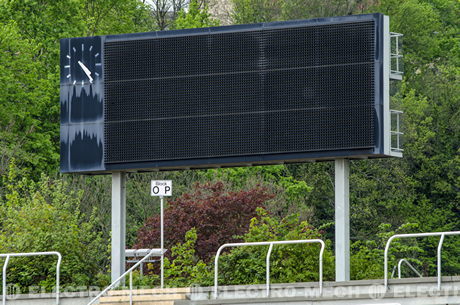 There is an entire generation that has grown up not knowing what life was like without the internet, phone apps and high tech electronics. As a society, we have sped with lightning evolution into an age where everything can be viewed, communicated and shared, in an instant. In the U.S., the supply and demand channel for high tech has been backed by the hungry fans of our sports teams. We have progressed from a nation attending a hometown game with the old fashioned manual scoreboard to an expectation level of streaming, moment-by-moment updates on electronic scoreboards.
There is an entire generation that has grown up not knowing what life was like without the internet, phone apps and high tech electronics. As a society, we have sped with lightning evolution into an age where everything can be viewed, communicated and shared, in an instant. In the U.S., the supply and demand channel for high tech has been backed by the hungry fans of our sports teams. We have progressed from a nation attending a hometown game with the old fashioned manual scoreboard to an expectation level of streaming, moment-by-moment updates on electronic scoreboards.
From small towns to large stadiums, the face of the sports scoreboard has made an impact of change in our society. Manual scoreboards were the mainstay of any sports field, for too many years. Cumbersome, often difficult to change the score, and in some cases a bit dangerous for the scorekeeper, most team managers and stadium owners knew there had to be a better way. Hard to believe that it has been a tad over 50 years when the first electronic scoreboard was installed in Yankee Stadium. 1959 was a big year for sports and the fans at Yankee Stadium took great pride in their vision. During that time, the electronic scoreboard face was pretty ‘static’. Offering only the ability to change the team scores, it offered faster up to the minute information, but little else.
In the 80’s, the scoreboard manufacturers began producing and installation better technology: team colors, bigger and better size choices, larger lettering; but still using high energy bulbs. As the 1990’s hit and personal computerization took the world by storm, manufacturers introduced the higher efficiency LED’s. LED could also be offered in both permanent and portable scoreboard models. Control panel designs were changed from the old fashioned relay switches to new ease-of-use transistors for faster updates.
With better technology, there was a change in the way that fans began to view the scoreboard. Attendees no longer looked at a scoreboard to validate a play, but as a method to actually feel as though they are part of the game. Stadium owners were given some new advertising options to present to sponsors. When the general public began getting low cost in-home theatres with larger television screens, stadiums stepped up to the plate to compete and keep their attendance. It seemed like overnight there was an addition of wireless and streaming video, combined with excellence in audio. This gave the fans and advertisers a new open door venue.
In the last five years, more cost effective smart phones and pad series technology has lifted the internet into the common tool of the day. Electronic scoreboards have kept up with the need, with real time net posts that are sent to the phones. Marketing executives have used their creative genius to design full-on branding campaigns to tie the game, team, sponsors and stadium in entertaining events.
The face of the electronic scoreboard has had a dramatic change, from a simple view to a major contact point to send high technology to the net, phones and beyond.
